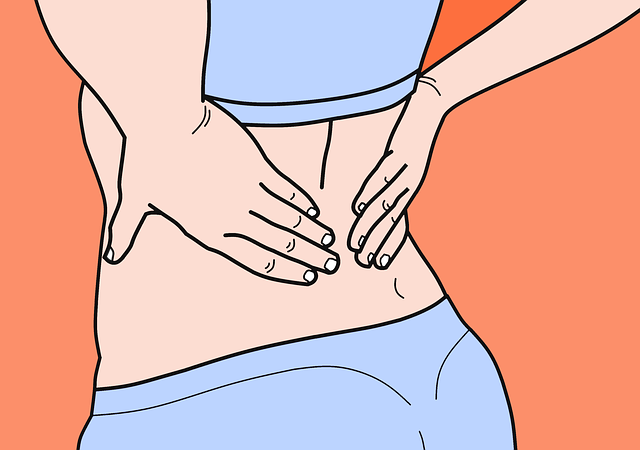Archive for January 2021
Living Longer and Happier Starts with Core Stability
Core stability contributes to spinal longevity
Your core is so much more than a six-pack of abs. It is an entire network of muscles that stretches from the top to the bottom of your spine, lending support to the vertebrae which are constantly under pressure, keeping you upright, preventing injury, and enabling a full range of motion. But too many people let their core stability fall by the wayside as they remain sedentary for hours each day. The deep-lying muscles in the core are almost always activated and thus they become overly tight while the phasic muscles which lend support and strength to the spine become weak from underuse. The result is a destabilized core which leaves you at risk for injury, spinal degeneration, and back pain. It’s time to pull yourself out of this vicious cycle.
A game plan for improving core stability
The best way to start is by ensuring your spine is aligned so that all the other good work you will do will build from a solid foundation. The chiropractic adjustment restores the spine to proper alignment, reducing pain and improving range of motion in the process. From here, we focus on stretching the overly tight postural muscles while gently exercising the underused phasic muscles to restore balance to your core.
Core stability means a longer life
This is no exaggeration. Your spine is the conduit of the nervous system and the framework which keeps you upright. But its lifespan is finite and most likely shorter than your overall lifespan. Maintaining good spinal health keeps you upright and healthy as you approach old age, and it is an important way of preventing injury and dysfunction. If you are interested in improving your spinal health, the core is the best place to start and the time to start is now! We can help- if you are interested in improving core stability to improve spinal health, give our office a call to schedule an appointment today.
A Proactive Approach to Mitigating Spinal Degeneration
Spines are finite structures
21st century humans are certainly living longer but it is worth asking how we are living in the later years of our life. The spine is the pinnacle of wellness- the structure that allows us to truly be human. It supports the weight of our upper bodies and keeps us upright; it facilitates communication of the nervous system, allowing for us to process ultra-sensory information in seconds and form ultra-human decisions and reactions to such stimulation. But It is not meant to last forever; spines are simply not meant to last as long as our life expectancy nowadays. Spinal degeneration is the fate of us all, but we also have the power to decide to what degree this degeneration defines our lives. Dr. Gregory A. Lind D.C., we believe that spinal longevity is a key to holistic wellness.
Vitamin D in the Winter
More important than a traditional vitamin (VITAMIN D)
Your body craves vitamin D. The nutrient is even more than a traditional vitamin because your body uses it as a prohormone, or precursor of a hormone. Medical Journals agree:
A human body produces vitamin D as a response to sun exposure. A person can also boost their vitamin D intake through certain foods or supplements.
Good sources of vitamin D include:
- oily fish – such as salmon, sardines, herring and mackerel.
- red meat.
- liver.
- egg yolks.
- fortified foods – such as some fat spreads and breakfast cereals.
Vitamin D is even more important in the winter
During the winter months the sun is out less, and the temperature is cooler so in addition to being outside less these is less sun exposure when we are outside. The rise in flu cases in the norther hemisphere of earth during this time of year seems to correlate exactly to our reduced sun exposure. Some of the fascination with vitamin D supplementation began with the discovery in the early 1920s that vitamin D prevented rickets according to the lancet. Other studies go on to show vitamin D’s role in non-skeletal disorders, including immune function, cardiovascular health, and cancer.
What about the increased chance of skin cancer from sun exposure?
The importance of vitamin D can be shadowed by the increased chance of developing skin cancer with long sun exposure. Luckily the science is on our side here as well. The typical person only need 10 to 15 minutes of sun exposure per day to receive all the benefits. And that level of sun exposure is almost certainly harmless for developing skin cancer in the short terms.
As always monitor for any new studies that show different results and stay health my friends. talk to you again soon.
Nutrient Timing: When You Eat Matters
Is your day scheduled around eating?
Or is eating scheduled around your day? Chances are, if you live an on-the-go lifestyle, it is the latter. Which means that our food choices, as well as the way we eat, are at the mercy of a hectic schedule that leaves little time for our well being. We often wait until we are starving, and then stuff ourselves until we are too full. Waiting until you are starving is a sure way to set yourself up for failure: you will likely choose a less healthy meal, eat more rapidly and consume more food overall than if you ate according to a schedule. This is just one example of why mindful eating is trending- it is a pathway to wellness.



